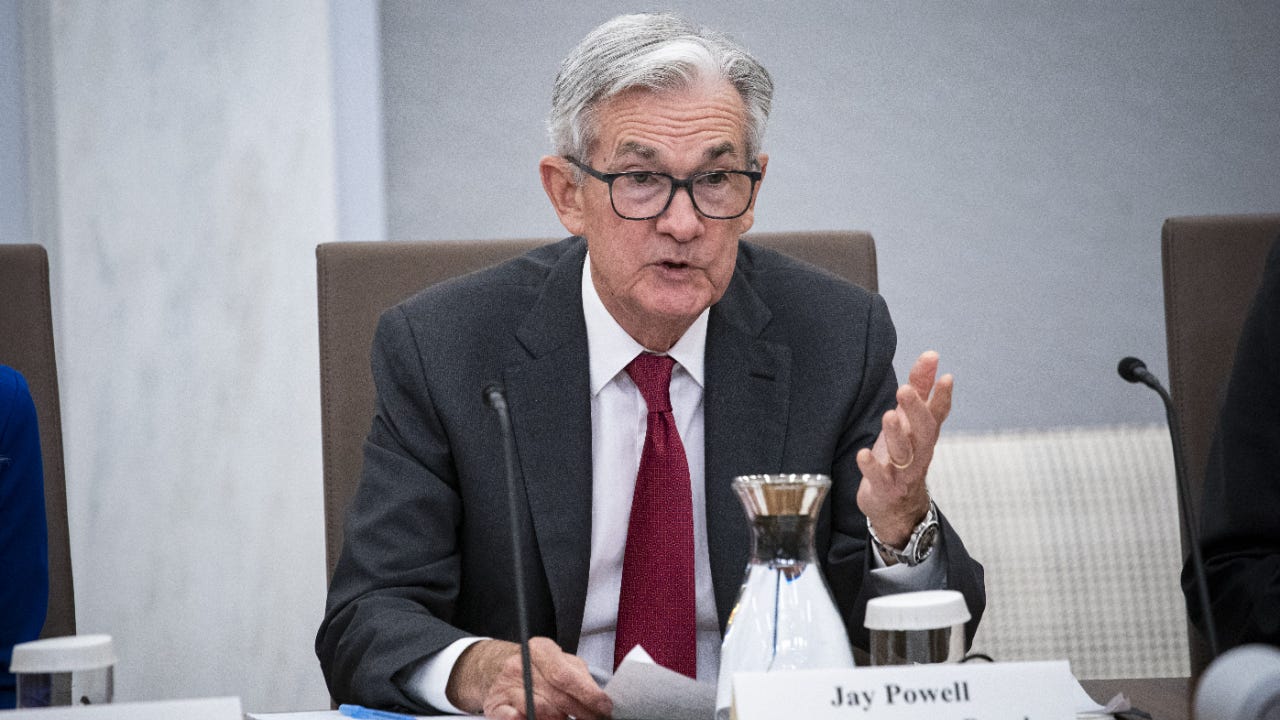Survey: 10-year Treasury yield to hold steady over the next year, experts say

The Bankrate promise
At Bankrate we strive to help you make smarter financial decisions. While we adhere to strict , this post may contain references to products from our partners. Here's an explanation for .
Investment professionals surveyed by Bankrate expect Treasury yields to hold relatively flat over the next 12 months even as the Federal Reserve continues hiking interest rates in the hopes of bringing inflation levels down. The Third-Quarter Market Mavens survey found that market experts envision the 10-year Treasury yield to be 3.6 percent a year from now, up from 3.45 percent at the end of the survey period on September 16, 2022. The yield was around 3.9 percent as of Sept. 26, 2022.
The analysts surveyed were almost evenly split between those expecting higher rates and those expecting lower rates. Specific forecasts ranged from 2.8 percent to 4.75 percent.
Despite the run-up in yields in recent months, few respondents recommended increasing portfolio allocations to bonds, instead preferring to maintain existing exposures or focusing on high-yielding dividend stocks.
Forecasts and analysis:
This article is one in a series discussing the results of Bankrate’s Market Mavens third-quarter survey:
- Analysts foresee 12% rise in stock market over next 12 months
- Pros say the 10-year Treasury yield to hold steady
- With rates rising, here’s where experts say to invest now
Market pros see 10-year yield staying relatively flat over the next year
The 10-year Treasury yield has spent a lot of time at very low levels in recent years, as the Fed cut interest rates and used its balance sheet to support the economy during the COVID-19 pandemic. The 10-year yield bottomed in August 2020 and began its climb higher as the economy began to recover and pandemic concerns lessened. The yield rose above 2 percent in February 2022 and has continued to climb alongside Fed rate hikes.
Analysts surveyed by Bankrate expect the 10-year Treasury yield to be 3.6 percent by the end of the third quarter of 2023, down slightly from the 3.8 percent level they expected it to reach by the end of the second quarter of 2023, as indicated in the previous survey.
The survey period took place just before the Fed’s latest three-quarter-point rate hike on Sept. 21. It was the third consecutive meeting where the Fed hiked rates by 0.75 percentage points.
The analysts’ estimates have generally increased alongside the overall rise in yields, with estimates rising from 1.86 percent in the third quarter 2021 survey to 3.8 percent in the second quarter 2022 survey.
Should investors increase their bond exposure amid higher rates?
With yields rising substantially so far this year, bond yields are more attractive than they’ve been in some time. So should investors be increasing their bond exposure now? The survey’s respondents had differing views.
“I would not be increasing bond exposure at this time,” says Wayne Wicker, chief investment officer at MissionSquare Retirement. “However, as the Fed continues to execute on its policy of raising the fed funds rate, investors should get the opportunity to increase their exposure sometime in the next twelve months.”
“With rates likely to keep rising over the next six months or so, keep durations short and fixed-income allocations at the same levels you had before,” says Brad McMillan, chief investment officer at Commonwealth Financial Network.
Sam Stovall, chief investment strategist at CFRA Research, thinks even income-focused investors should steer clear of bonds.
“I’m not a big fan of bonds,” he said. “I think income-oriented investors should focus more on high-yielding, quality large-cap stocks.”
But some analysts see the recent rise in yields as a chance to take advantage of lower bond prices.
Dec Mullarkey, managing director of investment strategy and asset allocation at SLC Management, says an allocation of 50 percent bonds and 50 percent stocks looks compelling.
“Bond yields are at some of their most attractive levels in decades,” he said. “Right now given how flat the yield curve is, holding 1- to 2-year Treasury bonds provides a high coupon.”
Sameer Samana, senior global market strategist at Wells Fargo Investment Institute, also thinks bonds are more attractive now and recommends investors slightly underweight stocks while increasing exposure to short-term bonds and commodities.
“As a whole, we have increased fixed-income allocations, as higher rates lead to more favorable valuations,” he said.
What should the average investor do amid continuing rate hikes from the Fed?
As the Fed appears committed to hiking interest rates as part of its effort to bring down high levels of inflation, investors may be wondering what, if anything, they should be doing with their portfolios. The market pros largely advised to remain patient and wait for the Fed’s tightening to run its course.
“The coming year will be volatile, but the average investor should stay committed to their long-term investment mix,” says Mullarkey. “The expectation is that the Fed will pause its tightening by May of next year with a Fed Funds rate above 4 percent.”
“I would continue to overweight large- and mid-cap domestic equities and underweight fixed income,” says MissionSquare’s Wicker. “Within fixed income, I would focus on short duration and cash in anticipation of a more aggressive bond strategy next year as yields will continue to increase and spreads will continue to widen.”
Several experts agreed that there will be opportunities available once it’s clear the Fed is done raising rates.
“We would be patient, but towards the end of the Fed’s rate hike cycle we will be looking for opportunities in longer-duration bonds and high-yield fixed income,” said Wells Fargo’s Samana.
Kim Caughey Forrest, chief investment officer at Bokeh Capital Partners, says investors should look for ways to increase their exposure to stocks and risk assets once the Fed stops raising rates, but advocates for staying invested in the meantime, saying the “purchasing power of cash is diminished by higher rates and inflation.”
Methodology
Bankrate’s third-quarter 2022 survey of stock market professionals was conducted from September 8-16 via an online poll. Survey requests were emailed to potential respondents nationwide, and responses were submitted voluntarily via a website. Responding were: Dec Mullarkey, managing director, SLC Management; Brad McMillan, chief investment officer, Commonwealth Financial Network; Kenneth Chavis IV, CFP, senior wealth manager, LourdMurray; Kim Caughey Forrest, chief investment officer/founder, Bokeh Capital Partners; Chuck Carlson, CFA, CEO, Horizon Investment Services; Robert A. Brusca, chief economist, FAO Economics; Sam Stovall, chief investment strategist, CFRA Research; Hugh Johnson, chief economist, Hugh Johnson Economics; Sameer Samana, senior global market strategist, Wells Fargo Investment Institute; Wayne Wicker, chief investment officer, MissionSquare Retirement; Louis Navellier, CIO, Navellier & Associates, Inc.
Editorial Disclaimer: All investors are advised to conduct their own independent research into investment strategies before making an investment decision. In addition, investors are advised that past investment product performance is no guarantee of future price appreciation.
